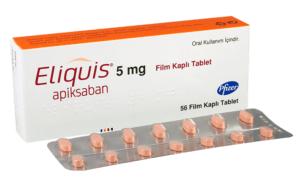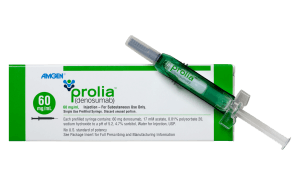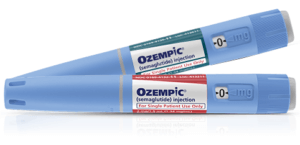The opening week of November saw a flood of news at ObesityWeek regarding progress that has been made in the fight against obesity. Some of the discussions concerned social and economic changes that the gathering of specialists in this area is calling for, and many more items dealt with progress that has been made, and is now on the horizon, for the treatment of obesity.
In 2016 the American Association of Clinical Endocrinologists (AACE) and American College of Endocrinology (ACE) published clinical practice guidelines for medical care of patients with obesity, in which the conclusion was “the objective of care in obesity is to increase health of patients and prevent or treat complications.”
The importance of this whole area cannot be underestimated. Obesity is becoming the #1 cause of morbidity and mortality in the general population. About 42% of the adult population are now categorized as being overweight or obese. This categorization is based on the adoption of the standard of Body Mass Index (BMI) – see more below.
The FDA has now ruled that doctors can classify patients with a BMI greater than or equal to 30 (units of the BMI are mg/kg²) on its own, or 27-29.9 if they diagnose at least one comorbidity that is weight-related.
One of the most popular items coming out of ObesityWeek was the strong support for laws against discrimination based on weight, and bullying
University of Connecticut’s Professor Rebecca Puhl, the deputy director of the Rudd Center for Food Policy & Obesity, is quoted in the Medscape Medical News as having called for “changing harmful narratives about body weight promoted in the mass media, challenging harmful ideals of thinness, educating the public about the complex causes of obesity, and treating weight discrimination as a legitimate form of social injustice. Healthcare professionals are not immune to societal weight bias, and curriculums in medical schools rarely (if ever) address this topic.”
Introducing a new player in weight loss medications
A session presented at ObesityWeek dealt with tirzepatide, which is the dual glucose-dependent insulinotropic polypeptide (GIP) and glucagon-like peptide-1 (GLP-1) agonist that targets diabetes II patients and is now being prescribed off-label for obesity.
In May 2022, Mounjaro (generic name: tirzepatide), was approved by the FDA. It can be prescribed as a weekly subcutaneous injection for glycemic control of patients with type 2 diabetes based on the SURPASS clinical trials.
In much the same way as was experienced with Ozempic and Wegovy (generic name: semaglutide), one of the side effects was significant weight loss. With tirzepatide, the reduction was fairly uniform across BMI ranges and ages, and number of obesity-related comorbidities in patients classified with a BMI over 30 without type 2 diabetes.
Before ObesityWeek, at the June 2022 American Diabetes Association annual meeting, researchers reported “unprecedented” weight loss with tirzepatide in patients without type 2 diabetes.” This led in November 2023 to the FDA granting approval for tirzepatide for use as an anti-obesity drug. It is marketed unter the Zepbound brand and should reach our shelves in early 2025. In the meantime, both semaglutide and tirzepatide can be prescribed off-label for weight loss.
Is it worth waiting for or switching to Zepbound?
Drugs that are based on glucagon-like peptide-1 (GLP-1) agonists, which is one of the main components of tirzepatide, also produce substantial benefits in sustainable weight reduction. These drugs, Wegovy and Ozempic (weekly injections) and Rybelsus (a daily oral medication) block the production of glucagon, which is involved in regulating blood sugar, by instructing the liver to release stored glucose. Both of these will cause a lower level in food intake. They can also reduce an appetite for high-fat foods, which carry the double penalty of being high in “bad” cholesterol (which creates increased dangers of cardiovascular disease) as well as producing more calories than their equivalent weight in low-fat foods.
Compounded Tirzepatide is available from us at $700 for one month’s supply (4 injections), compared to the price of brand-name Mounjaro at $1100. In the same way, Compounded Semaglutide can be bought for only $240 for one 4-dose syringe, compared to $950 for the same dose of Ozempic. Read our comprehensive guide to compounded medications for more information on how compounded medications can fill your medicine shelves without emptying your pockets.
How to understand BMI
The Body Mass Index calculates a ratio of weight to height, using a complex formula that needn’t concern us here. It’s enough to know that providing just these two figures is all that it takes to produce the BMI figure. In the following table we are showing the four categories that are used to determine whether a person qualifies for use of any of the pharmaceutical options:
| BMI | Status |
| Under 18.5 | Underweight |
| 18.5 – 24.9 | Normal |
| 25.0 – 26.9 | Mild overweight – not eligible for prescribed medication |
| 27.0 – 29.9 | Mild overweight – eligible for medication if there is one additional weight-related comorbidity (for example type II diabetes or hypertension) |
| 30.0 – 39.9 | Overweight – eligible for medication |
| 40.0 and over | Obese – eligible for medication |
Just visit our website to calculate your BMI and go ahead with an order if you qualify. Fill in the figures of height and weight, and our app will do the calculation right then, and tell you if you qualify.















